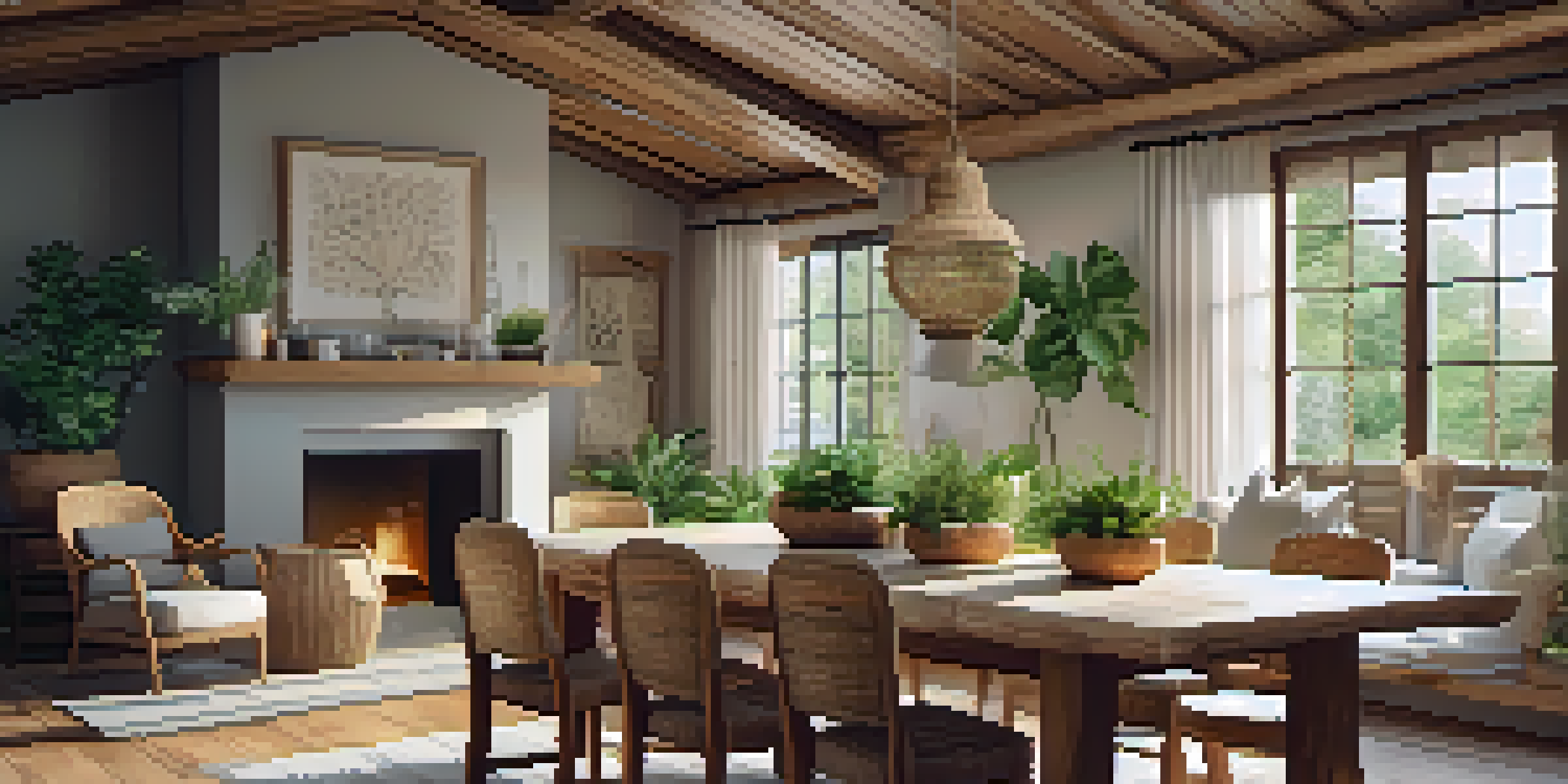The Beauty of Wood: Classic Materials in Interior Design

Why Wood is a Timeless Choice for Interiors
Wood has been a staple in interior design for centuries, admired for its natural beauty and warmth. It offers a unique character that can be both rustic and refined, making it suitable for various styles, from cozy cottages to modern minimalist spaces.
Wood is the most enduring of all materials. It has the power to evoke warmth and comfort, making it a timeless choice for any interior.
The versatility of wood allows it to adapt to changing design trends while maintaining its classic appeal. Whether used in furniture, flooring, or accent pieces, wood creates a lasting impression that can enhance any room’s ambiance.
Moreover, wood’s organic nature brings a sense of tranquility to interiors, connecting us to nature. This makes it an ideal choice for creating spaces that feel inviting and comfortable, drawing people in and encouraging them to stay awhile.
Different Types of Wood and Their Unique Qualities
When it comes to interior design, not all wood is created equal. Hardwoods like oak and maple are known for their durability and rich grain patterns, making them excellent choices for high-traffic areas and furniture that withstands daily use.

On the other hand, softwoods such as pine and cedar offer a lighter, more casual aesthetic. These woods can bring a fresh, airy feel to a space and are often used in beach houses or rustic-themed designs, adding charm without feeling heavy.
Wood Adds Warmth and Character
Wood's natural beauty and versatility make it an ideal choice for creating inviting and stylish interiors.
Understanding the characteristics of different types of wood can empower designers and homeowners alike to make informed choices. Each type has its own color, texture, and strength, which can significantly influence the overall look and feel of a room.
Incorporating Wood in Home Decor
Incorporating wood into your interior design doesn’t have to be overwhelming. Start small by adding wooden accents like picture frames, shelves, or decorative bowls to create warmth without a major overhaul.
The best part of a wooden home is that it tells a story, reflecting the life and love that fills its walls.
For a bolder approach, consider wooden furniture pieces such as a dining table or bed frame. These items serve as focal points in a room, and their natural textures can complement a variety of color palettes and styles.
Additionally, mixing different types of wood can add depth and interest to your decor. Just be sure to keep a cohesive color scheme to maintain harmony throughout the space, creating a balanced and inviting atmosphere.
Sustainable Wood Choices in Design
With growing awareness around environmental issues, sustainable wood choices have become a priority in interior design. Opting for wood sourced from responsibly managed forests can help reduce our carbon footprint and promote ecological balance.
Bamboo, for example, is a fantastic sustainable option. It grows quickly and can be harvested without harming the ecosystem, making it an eco-friendly choice for flooring and furniture.
Sustainable Choices Matter
Opting for sustainably sourced or reclaimed wood not only benefits the environment but also adds unique character to your space.
Incorporating reclaimed wood is another excellent way to embrace sustainability. Not only does it reduce waste, but it also brings a sense of history and character to your space, telling a story that new materials simply can’t match.
The Role of Wood in Enhancing Acoustics
One often-overlooked benefit of wood in interior design is its ability to enhance acoustics. Wood naturally absorbs sound, which can help create a more peaceful environment, especially in larger spaces like open-concept living areas.
Using wood paneling or ceilings can effectively reduce noise levels, making your home feel more serene. This characteristic is particularly valuable in urban settings where external noise can be disruptive.
By choosing wood for acoustic purposes, you not only add aesthetic value to your home but also improve its functionality. It’s a simple way to create a more enjoyable living space that promotes relaxation.
Creating a Cohesive Design with Wood Elements
To achieve a harmonious design, it's essential to consider how wood elements work together within your space. Using a consistent color palette and grain pattern can tie various pieces together, creating a unified look.
For instance, pairing light wooden furniture with darker accents can create visual interest without clashing. This balance can enhance the overall aesthetic, making your space feel thoughtfully curated.
Wood Enhances Acoustics
Incorporating wood elements can improve sound absorption, creating a more peaceful and serene living environment.
Additionally, incorporating textiles and other materials can enrich the design. Fabrics in natural tones or textures can complement wooden elements, adding layers and warmth that make the space feel inviting.
Maintenance and Care for Wooden Interiors
Proper maintenance is key to preserving the beauty of wooden elements in your home. Regular dusting and occasional polishing can keep surfaces looking their best and prolong their lifespan.
Be mindful of humidity levels, as excessive moisture can warp or damage wood. Using dehumidifiers in damp areas and ensuring proper ventilation can help maintain the integrity of your wooden decor.

Lastly, don’t be afraid to embrace imperfections. Scratches and dents can add character to wooden pieces, telling a story of their own. With the right care, your wooden interiors can remain beautiful and timeless for years to come.